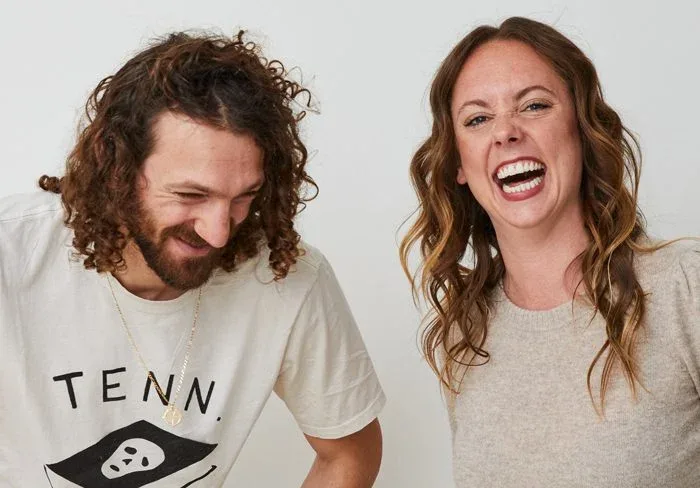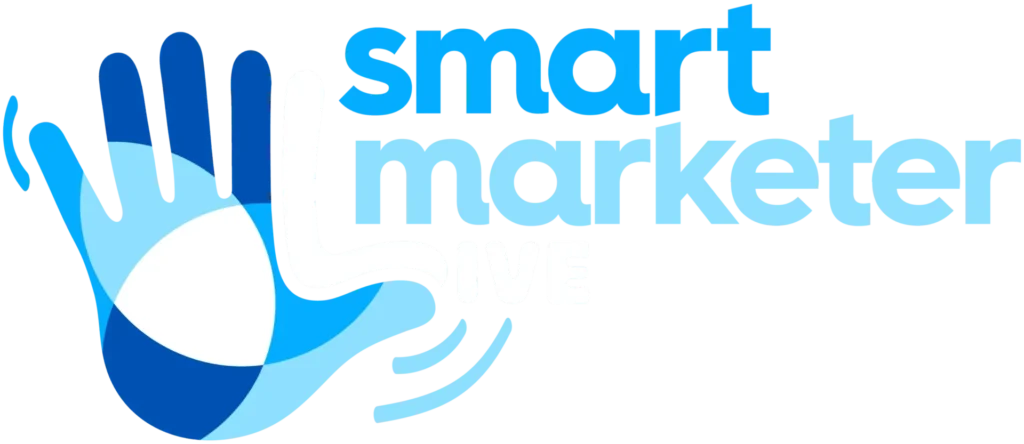Join Train My Traffic Person
Just getting started with Facebook ads?
Trial and error can be expensive, so it’s worth it to get some pro advice before you dive into the platform
I sat down with 4 members of the Smart Marketer Agency — including Ezra Firestone, Molly Pittman, and their 2 senior media buyers — to ask them this question:
Here’s what they had to say.
Ezra Firestone, Founder of Smart Marketer
If I was just getting started on Facebook, I would use what I like to call content amplification.
This is a strategy where you use content — like a blog post or native Facebook video — to find an audience that’s interested in your messaging, then follow up with a relevant offer.
If I was doing this in Smart Marketer’s ad account, for example, I’d target marketers and business owners who are interested in educational content to help them grow their businesses. (You don’t know anyone like that, do you?)
Here’s how I’d break down my budget:
1. $200 on content
I would spend $15 a day for 10–15 days on page post amplification or video view campaigns. This would get my content in front of my audience so I could start to develop a relationship with them.
That’s the hardest part about starting fresh on Facebook — people don’t know who you are. You don’t have a community yet, so get out there and build one!
2. $400 on conversion objective campaigns
Next, I would target my warm audiences. These are the folks who engaged with my page post campaigns or watched my videos.
Now that some people know me, it’s time to further develop these relationships by making offers that are relevant to the content I showed them
I would start with an offer for my best-selling product.
3. $100 on retargeting
Now I just have to keep at it.
I’d retarget the people who visited my website or otherwise engaged with my conversion campaigns.
It often takes multiple touchpoints with a customer before making a sale, so I just have to keep getting in front of them with a relevant offer.
4. $300 on lead generation
This is supplementary to the 3 steps above.
While amplifying content and retargeting people who engage with it, I also want to build an email list.
Email is still the most profitable sales channel for marketers, and Facebook is the perfect tool for reaching cold audiences and turning them into subscribers.
So I would run lead gen campaigns to get people on my list, then use auto-responders to follow up with more content and offers to get them to convert, just like I’m doing in my ads funnel above.
Vanessa Vega, Senior Media Buyer at the Smart Marketer Agency
First , I would monitor my social accounts for any clues as to what my audience is into organically.
Then I’d spend $150–$250 boosting the pieces that have done well organically — preferably in a video views campaign so I can use the “On Facebook Audiences” option for retargeting.
I’d probably run that campaign for 5–7 days before retargeting this audience.
Next, I’d retarget the people from that video views campaign using a conversion objective and the same exact creative I used before, plus a new one! I’d probably spend another $200 on that within a 3–5 day period.
Then I’d add one cold traffic audience to the same initial video, which should now have some social proof from the traffic we ran to it. I’d allocate around $350 to this.
Lastly, I’d spend around $150 retargeting anyone who made it outside of Facebook and onto my site going towards the same offer.
Dennis Paskalev, Senior Media Buyer at the Smart Marketer Agency
I have a lot to say on this topic, so get comfortable!
Determine meaningful and realistic benchmarks.
Benchmarks will tell you which ads to keep on or turn off, and will help remove biases from your decision making.
Start by determining your target ROAS.
Calculating this metric manually will help you avoid the pitfalls of incomplete attribution and reporting from Facebook since iOS 14.5.
You also won’t be able to set proper benchmarks on Facebook right away, but if you set your target ROAS then you can compare Facebook performance with overall backend performance.
Here’s an example:
Let’s say your target ROAS is 1.5. You start running ads for a few days and see that your ROAS is 1.2, while the ROAS reported in Ads Manager is 1. This means you can expect to hit a 1.5 ROAS if you’re getting 1.3 ROAS on Facebook.
Keep an eye on these two metrics in order to adjust your benchmarks on Facebook, then reevaluate your assumption in a week or two.
Set the right expectations.
To be honest, you probably won’t be able to crack Facebook ads right away.
Usually when you start, you don’t have a proven offer to use top-of-funnel (TOF), and you don’t have a proven landing page, creatives, copy and targeting.
But that’s okay!
When you start running ads, you’re essentially buying data by testing campaigns and analyzing their performance. Then you can optimize, iterate and eventually get to the desired profitability rate.
So start with what you think has the highest chance of success, then don’t be afraid to pivot quickly and test different offers if you don’t immediately see great results.
Account structure.
Keep it simple. The best way to start is with 2 campaigns:
- One Ad Budget Optimization (ABO) campaign for top of funnel.
- One ABO campaign for retargeting, with all retargeting audiences clumped together unless you have other traffic sources.
Your starting budget.
Run all TOF ad sets with the lowest possible daily budget. This will enable you to run more tests at once.
Yes, it will also result in a slightly suboptimal performance for these ad sets (as they won’t be able to exit the learning phase), but you’ll be able to test faster so you can move away from things that don’t work without spending much money on them.
Remember, at the start we’re primarily buying data that will allow us to make a breakthrough.
So what’s the lowest possible budget? A good rule of thumb is to set the ad set daily budget to 1X your target CPA for TOF.
What creatives would you use?
I know most people who are new to Facebook ads don’t have a lot of creative to choose from.
If possible, use at least 1 video and 1 image ad per hook.
If you don’t have any video creative, try using 1 image per hook to test as a proof of concept. Then if you see promising results, you can invest in the creation of a video for that hook.
What copy would you use?
Don’t test too many copy variations at once.
Once you have copy that works well enough, focus on testing different creatives with that copy, as finding a winning creative is the main priority.
When you have that, you can start testing different copy variations with that creative.
What landing page would you use?
Because we’re on a limited budget, I wouldn’t make the funnel too complex by using multiple landing pages.
The best place to start is probably running ads directly to a product page.
Molly Pittman, CEO of Smart Marketer
This is a really interesting question!
Because if I was going to spend $1,000 on Facebook right now, then yeah — I’d put that money into a multi-step ads funnel.
But not if I was spending my first $1,000. People need more testing budget than they think — it usually takes more than $1,000.
Here’s what I’d do instead.
Find a winning front-end offer.
If I had $1,000 to spend on Facebook ads and the business was brand new to paid advertising, my goal would be to create and test an offer that could acquire customers for at least break even, and hopefully at profit.
If I didn’t have an offer in mind, then the first thing I would do is create one.
If I was an ecommerce brand, I would run ads directly to a product page for my best-selling offer. Easy.
If I was an info business, rather than pitching an expensive course right away, I would send traffic to a low-dollar introductory offer or a lead magnet.
Then I would spend the entire $1,000 trying to prove that this funnel can be profitable for my business.
How to prove your offer.
Here’s the process I would use to prove my funnel:
- Set up a campaign for $50–$150 a day, depending on what the product or service is.
- Test 5–10 ads with different copy and creative variations.
- Test the offer for about 10 days at an average daily budget of around $100, while optimizing along the way to find the offer that works.
After you’ve proven that you can run this offer and hit your target CPA, then I would build out my multi-step funnel like what Vanessa and Ezra say above.
I would use the Engage & Filter method, using content to find people who are interested in my brand and then making them offers.
But my advice — start by testing your offers!
Join Train My Traffic Person




